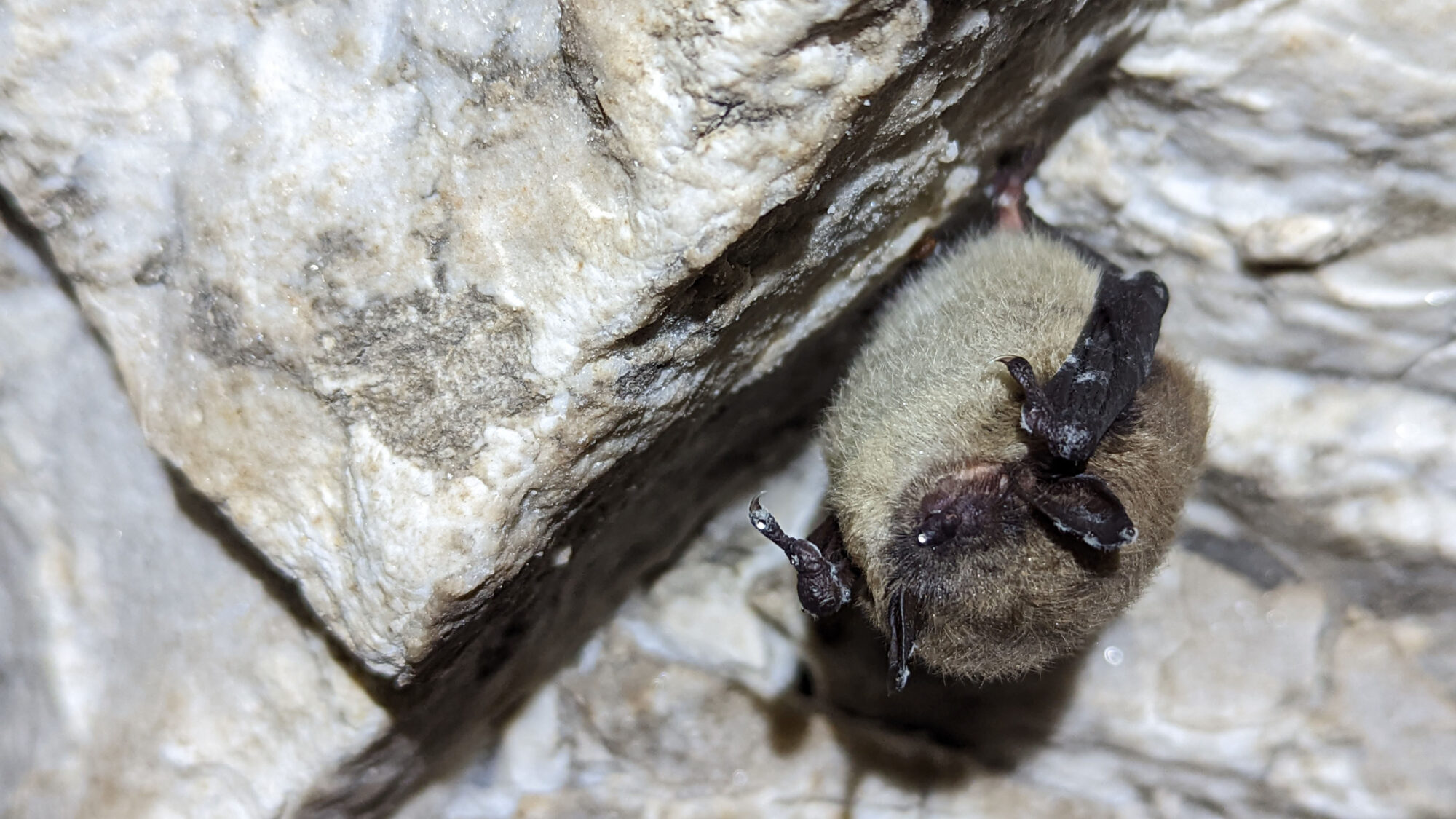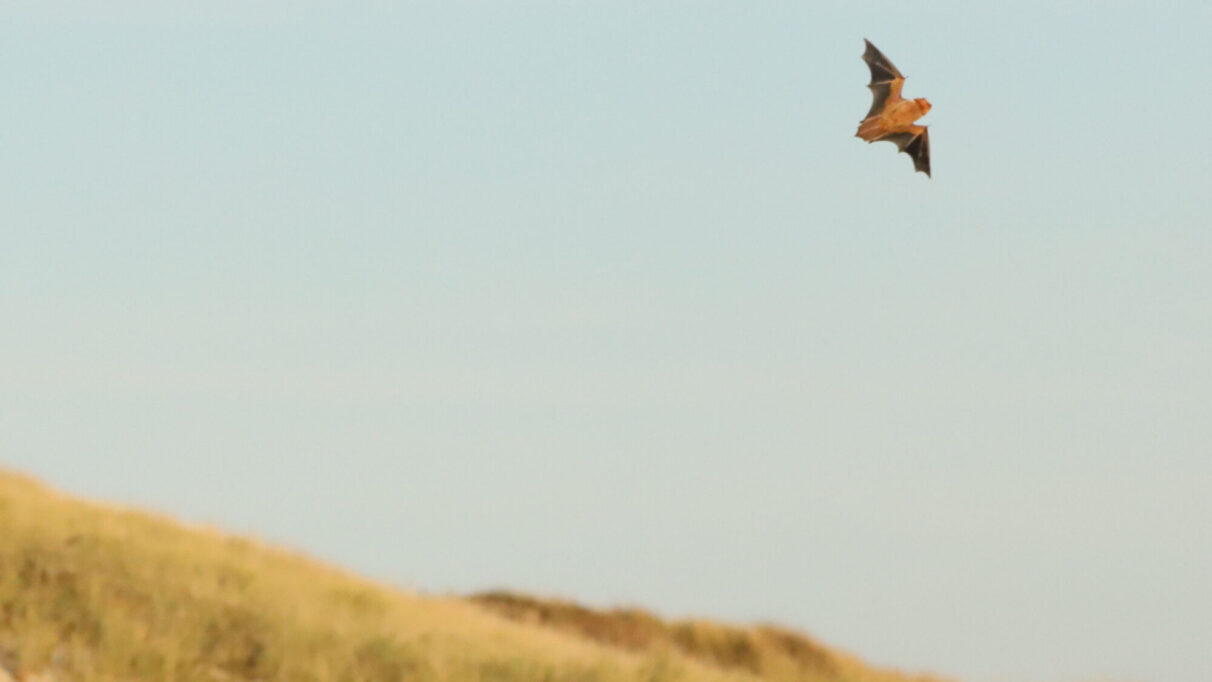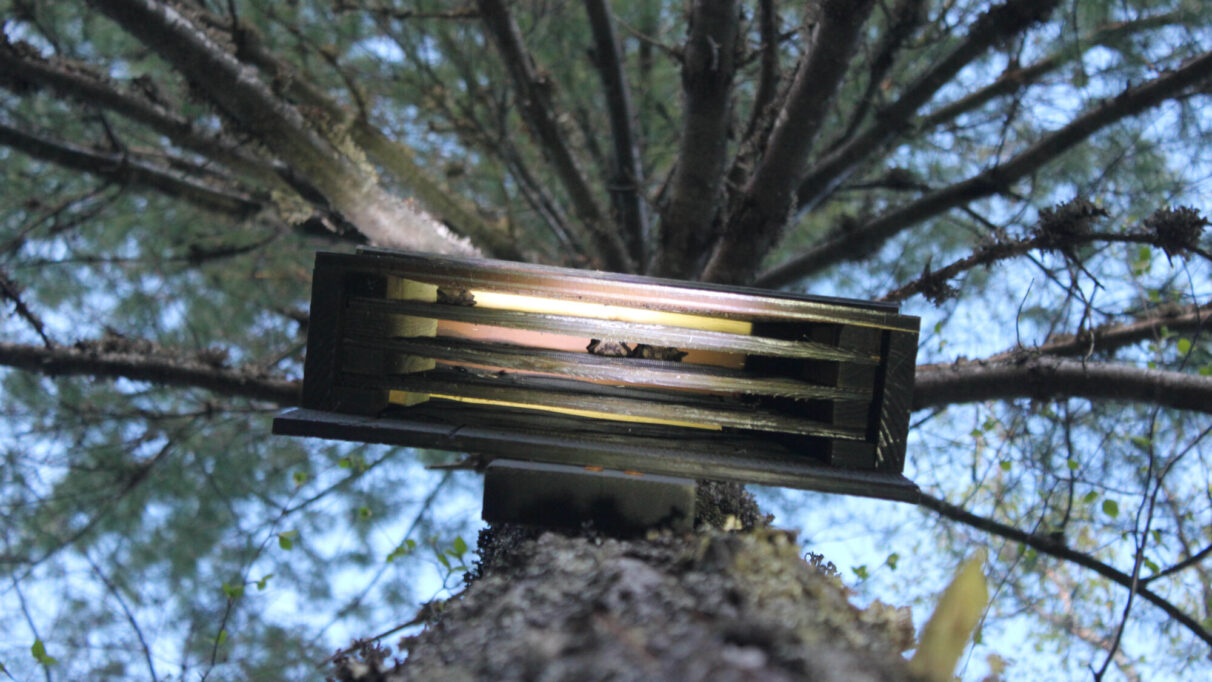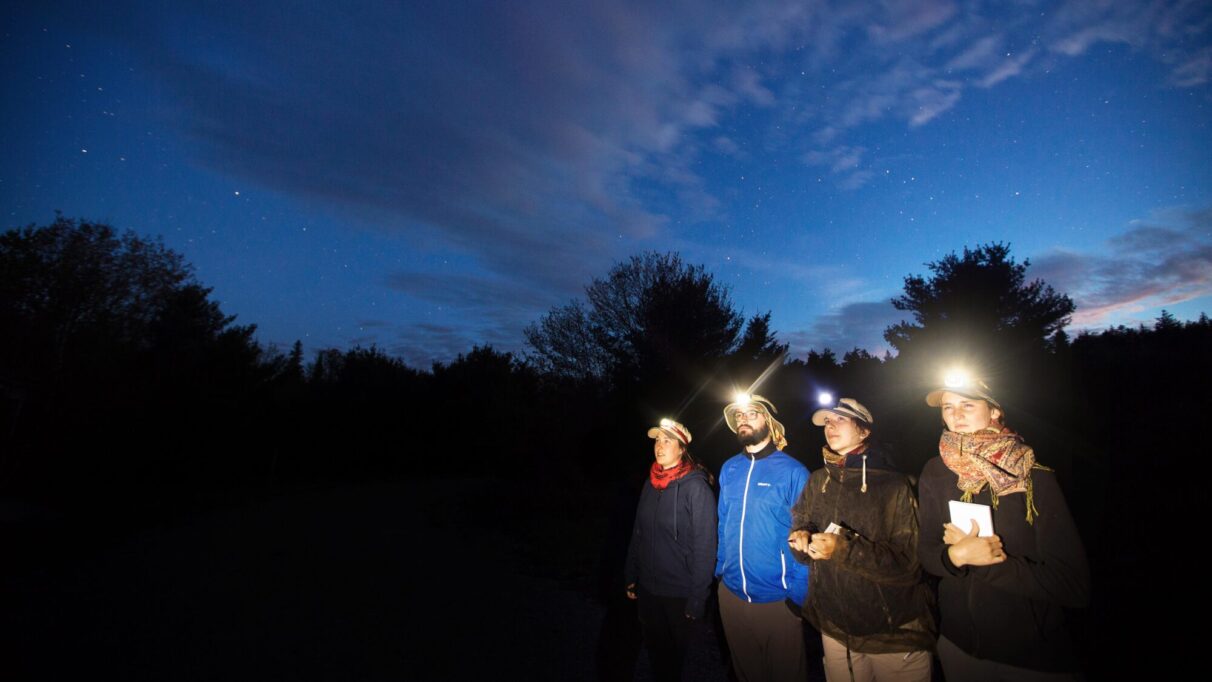Nova Scotia bats struggle to rebound from deadly fungal disease
Through a decade of monitoring, local researchers have found two species of bats are developing tolerance

caption
A hibernating bat with white-nose syndrome in Nova Scotia.A Queens County research institute is warning that bat populations still aren’t recovering after a deadly disease almost wiped out the province’s bats.
Mersey Tobeatic Research Institute began its bat monitoring system in 2013, two years after the first white-nose syndrome cases started showing on hibernating bats in Nova Scotia.
“It is kind of like a mould growing on them,” said Lori Phinney, the institute’s species at risk biologist.
The syndrome affects three species of hibernating bat populations in Nova Scotia: the northern long-eared, the little brown and the tri-colored bat. In a 2017 study, researchers found that little brown and tri-colored bats developed tolerance and resistance to the fungus, but the northern long-eared bats have not.
“This (northern long-eared) species is predicted to possibly go extinct from the disease while the others show some promise,” she said.
Phinney explained the European mould-like fungus mysteriously arrived in North America sometime around 2005. Within a few years, it killed more than 90 per cent of the hibernating bat species in the U.S. and Canada, which resulted in Nova Scotia categorizing them as endangered on the province’s species at risk list.
The fungus attaches to the bats while they hibernate in winter, either in caves, abandoned mines or somewhere enclosed and damp enough that the fungus can grow too.
“They’re waking up more and they burn through their fat reserves trying to basically clean off the fungus and not be sick,” Phinney said.
Flying mammals essential to humans
Phinney said Nova Scotia bats are important to humans because they indicate the ecosystem’s health and serve as nature’s pest control. Each night they’re active, bats can eat up to 100 per cent of their body weight in mosquitos and moths. That means they can eat more than 4,000 mosquitos.

caption
A migratory eastern red bat feeds at sunset in Sable Island, Nova Scotia.Sepidar Golestaneh, a bat researcher from the University of Waterloo who specializes in Nova Scotia bats, said before the fungus arrived in the province in 2011 one would have found about 15,000 bats in winter refuges. Now, she estimates the number of bats to be around 1,500.
Golestaneh said each bat species should be considered separately since the tri-colored bat has different roosting behaviours, and researchers can rarely find them.
“Even in lots of summer habitats as well, we don’t see little browns or northern long-eareds anymore,” she said.

caption
A myotis bat finds refuge in a man-made bat box in southwest Nova Scotia.“Little brown bats are the ones that kind of love to use human-made structures,” Phinney added.
Bats increase one pup at a time
Though research is showing the tri-colored and little brown bats are developing tolerance for the fungus, they are far from rebounding. Recovery is slow because bats can only reproduce one pup at a time.
In 2003, researchers set up audio monitoring around areas frequented by bats. From those echolocation recordings, they estimated a population of about 9,600 bats in Nova Scotia.
Between 2013 and 2024, people in Nova Scotia reported 6,400 bat sightings to the institute’s bat conservation website and telephone hotline.
Last year alone, there were 475 bat sightings across the province, with people reporting 76 bats in Halifax County.

caption
Student bat monitors look for bats in southwest Nova Scotia.Nocturnal creatures hard to find
Bats are nocturnal and hard to spot, so public sightings do not represent the entire bat population in Nova Scotia. Still, researchers use reported sightings to help identify places needing more protection.
“If people find a spot where there are multiple bats in the summer, it is likely a female group of bats getting together to raise babies … those are the sites where we and the public can have the biggest impact because they’re generally using the same caves every year,” Phinney said.
With the threat of white-nose syndrome still in the province, reporting a bat sighting is the easiest and most important way the public can help the bats of Nova Scotia.
“As long as people aren’t going to caves and disturbing the bats,” Phinney said.
To report bat sightings in Nova Scotia, go to www.batconservation.ca or call 1-866-727-3447 (toll-free).
About the author

Ariel Mackenzie
Ariel Mackenzie is a originally from Toronto and holds an Honours B.A. in English and a Bachelor of Journalism from Dalhousie and the University...
